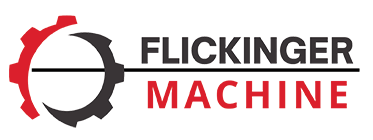Reliable Stressing Accessories for Post-Tensioning Applications
Post-tensioning applications are at their most efficient and reliable with certain concrete stressing accessories, including:
- Grippers
- Wedge seaters and hand wedge seaters
- Nose pieces
- Gripper handles and retainer plates
- Gripper blocks
Given the nature of post-tensioning operations, it’s important for operator crews to have an array of stressing accessories on hand to expand operational capabilities and ensure rapid modifications to any post-tensioning equipment.
Reliable Stressing Accessories are Essential for Post-tensioning Equipment
Post-tensioning hydraulic jacks and pumps are capable of delivering impressive amounts of power and precision, but those jack and pump systems occasionally need to be augmented or maintained with one or more stressing accessories, including the following:
- Grippers – Grippers are responsible for latching onto the strand during post-tensioning applications using a set of serrated teeth that standard wedges don’t have. These grippers pull the strand into the post-tensioning jack and apply the necessary initial tensile forces to secure the strand and ensure it is tensioned properly. Grippers are available in several diameters, each purpose-built for different strand diameters. They include 3/8″, 7/16”, 1/2″ and 19/32” gripper sets. While most post-tensioning applications rely on strand of identical diameter, field conditions are frequently unpredictable and it’s common for post-tensioning crews to encounter tensioning strand that doesn’t line up with expectations – such as damaged strand or thicker or thinner strand. With several gripper sets on hand, your post-tensioning jacks can be modified in the field to ensure reliable, efficient tensioning.
- Wedge seaters and hand wedge seaters – Wedge seaters are built into the post-tensioning jack, positioned just behind the jack’s nose piece. From this forward position, wedge seaters are used to secure the post-tensioning wedges and align them while the jack tensions the strand. Once sufficient tensile forces have been achieved, the wedge seater releases the wedge, which is then pulled into the anchor pocket and locks into place.
Hand wedge seaters perform a similar purpose but are used by hand to position the wedges prior to tensioning. These specialized tools are designed for post-tensioning applications as they feature an angular design and grooved build that greatly speeds up the wedge seating process. Alternatives, such as using a hammer to tap in the wedges, tend to be clumsier and result in less reliable, less efficient tensioning.
- Nose pieces – On a post-tensioning jack, the nose piece sits at the very front and is responsible for directly interfacing with the anchor pocket and anchorage system. During post-tensioning applications, the nose piece ensures the hydraulic jack stays in place and that nothing interferes with force application. Like with gripper sets, post-tensioning nose pieces are available in a variety of lengths. For single-acting post-tensioning jacks, 3” and 6” nose piece lengths are common options. For double-acting post-tensioning jacks, 3”, 4”, 6”, 8”, 10” and 12” models are available. As tight working conditions and short clearance zones are everywhere on a post-tensioning worksite, it’s highly recommended that jack operators keep additional nose pieces on hand when working on foundation projects or other post-tensioning jobs where clearance is likely to be a concern.
- Gripper handles and retainer plates – The post-tension jack’s gripper handles are fitted on the back of the jack and provide the equipment operator with an easy and reliable hold during post-tensioning applications. Given the vibration and often – precarious nature of post-tensioning work, a steady grip is a matter of safety.
Gripper retainer plates secure the rest of the gripper’s components to the post-tensioning jack. This includes the gripper handles and gripper block.
The gripper’s handle and retainer plates don’t need to be switched out unless they sustain damage or excessive wear. Corrosion is a particular hazard to retainer plates, and they are at risk of failure in extreme working environments. As such, it’s also recommended that post-tensioning crews keep additional gripper handles and retainer plates in reserve, as they can be rapidly switched out in the field.
- Gripper blocks – Gripper blocks also do not require regular replacement, but the nature of post-tensioning worksites is such that they may be damaged or excessively worn by field conditions. It is necessary to keep a modest inventory of gripper blocks on hand as they are responsible for housing and protecting the grippers as they apply tension and are drawn back into the post-tensioning jack.
Reliable Stressing Accessories Ensure Reliable Post-Tensioning Applications
With reliable stressing accessories for your post-tensioning applications, your operators will work faster, work safer, and will be prepared for anything that develops in the field. That includes an inventory of grippers, wedge seaters, hand wedge seaters, nose pieces, gripper handles, retainer plates and gripper blocks.
A reputable hydraulic equipment supplier will have all of the above available, and in models that complement your equipment assets and will work best with your post-tensioning projects.
